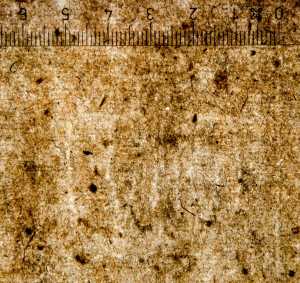Specifications
| Title | Venus and Cupid |
|---|---|
| Material and technique | Black chalk, heightened with white, on coarse brown paper |
| Object type |
Drawing
> Two-dimensional object
> Art object
|
| Location | This object is in storage |
| Dimensions |
Height 294 mm Width 165 mm |
|---|---|
| Artists |
Artist:
Anoniem
Previously attributed: Pauwels Franck Previously attributed: Paolo Veronese (Paolo Caliari) Previously attributed: Poccetti (Bernardino Barbatelli) |
| Accession number | I 44 (PK) |
| Credits | Loan Stichting Museum Boijmans Van Beuningen (former Koenigs collection), 1940 |
| Department | Drawings & Prints |
| Acquisition date | 1940 |
| Creation date | in circa 1580 |
| Signature | none |
| Watermark | indistinct, something in a circle (c. 44 x 40 mm, top centre, on P3 of 6P, vH) |
| Inscriptions | '4' (verso, centre, in pen and brown ink, faded and permeated to the front), '595' (verso, centre, below the preceding, in pen and brown ink) |
| Collector | Collector / Franz Koenigs |
| Mark | Z. Sagredo (L.2103a, inv. 'P:No 39' on removed backing paper), F.W. Koenigs (L.1023a on removed backing paper) |
| Provenance | Zaccaria Sagredo (1653-1729, L.2103a, inv. 'P:no:39' in dorso, on the removed backing paper), Venice; - ; Franz W. Koenigs (1881-1941), Haarlem (L. 1023a), 1927 (Paolo Veronese); on loan to the museum, 1935-1940; purchased with the Koenigs collection by D.G. van Beuningen (1871-1955), Rotterdam and presented to the Stichting Museum Boymans, 1940; on loan to the museum since 1940 |
| Exhibitions | none |
| Research |
Show research Italian Drawings 1400-1600 |
| Literature | Cocke 1974, p. 31, fig. 46 (Veronese, erroneously as inv. I 45); Pignatti 1976, p. 114, under no. 68 (Veronese), ill.; Rearick 1980, pp. 55-56 (Paolo Fiammingo); Cocke 1984, p. 383, no. 216 (rejected Veronese); Rearick 2001, p. 224, no. 216 (Paolo Fiammingo; erroneously referring to inv. no. I 45); Meijer 2017, p. 344 n. 22 (Venus Felix, erroneously as inv. I 45; not Frank but Verona); Meijer 2017, pp. 343-344, n. 22 (erroneously as inv. I 45) |
| Material | |
| Object | |
| Technique |
Highlight
> Painting technique
> Technique
> Material and technique
|
| Geographical origin | Italy > Southern Europe > Europe |
| Place of manufacture | Venice > Veneto region > Italy > Southern Europe > Europe |
Do you have corrections or additional information about this work? Please, send us a message
























